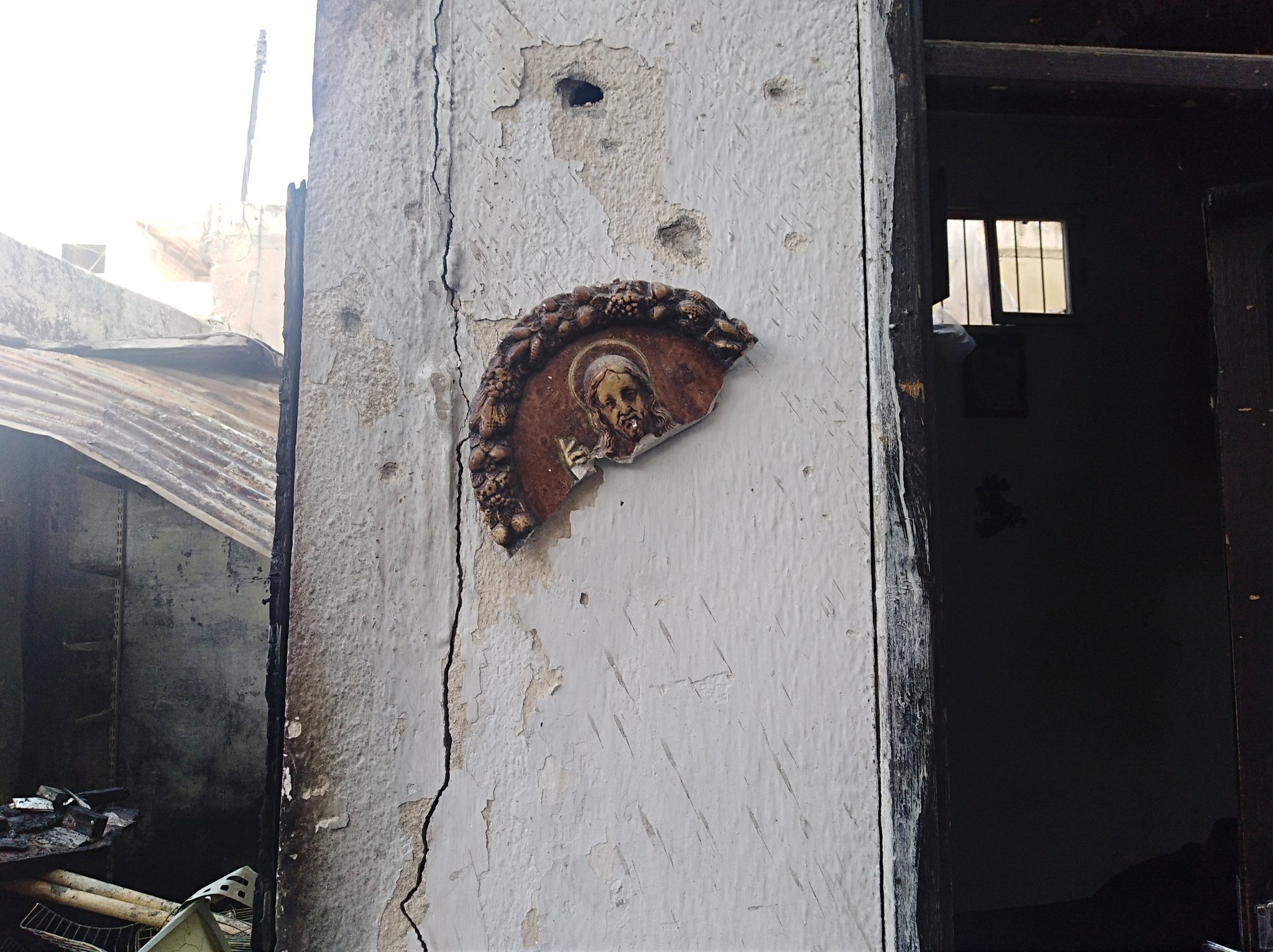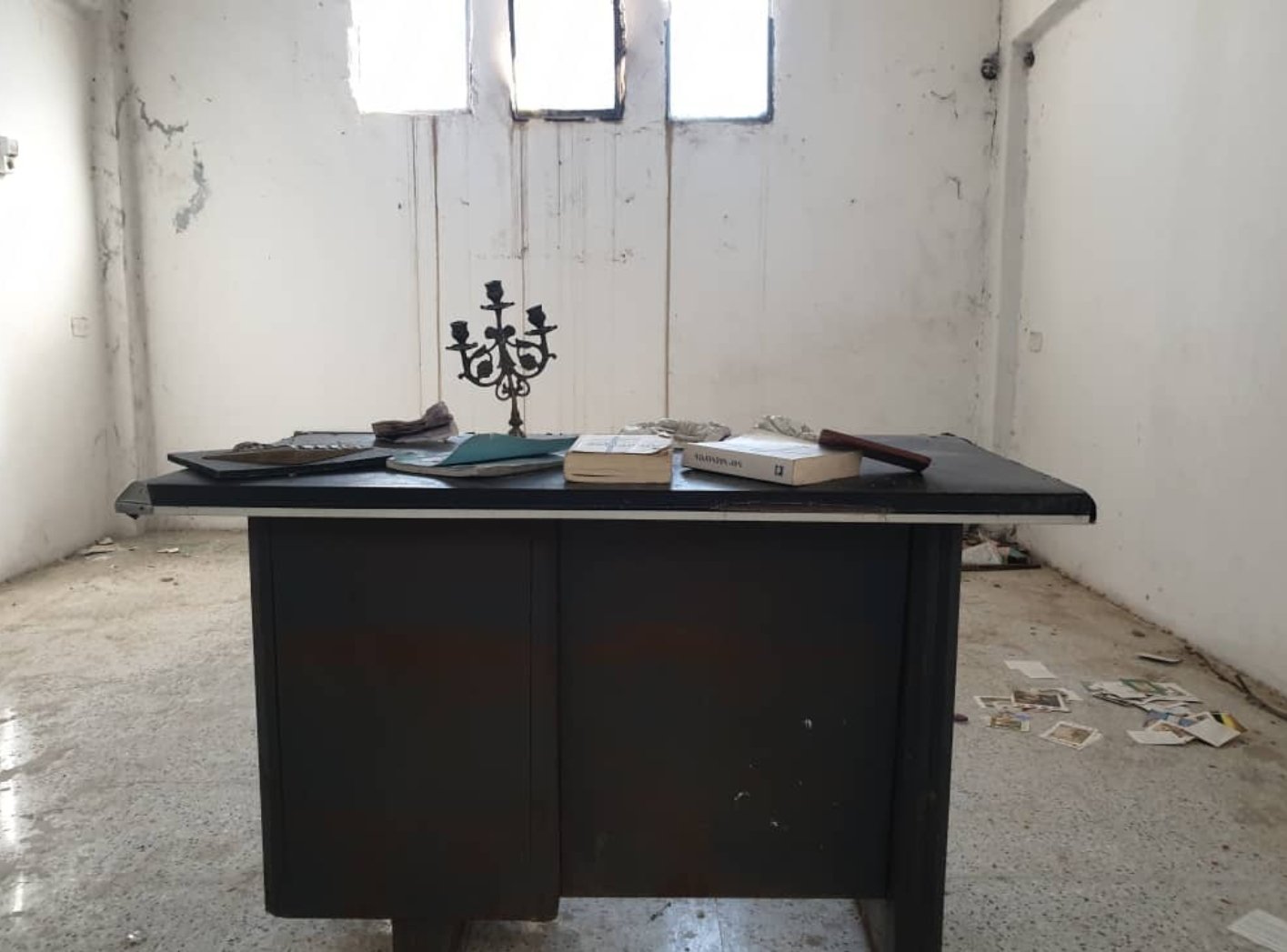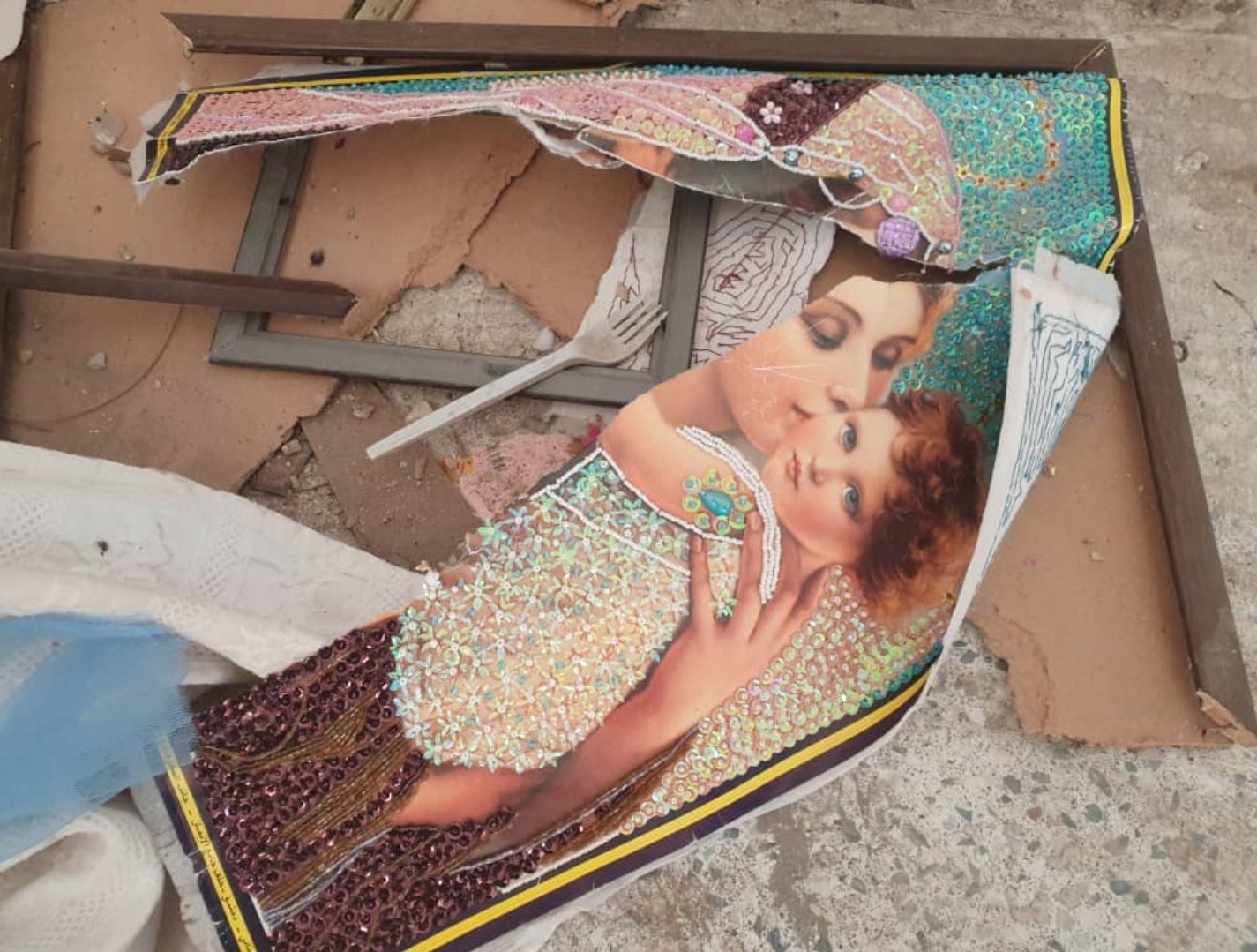Murder, Looting, and Displacement: Two Months into Turkey’s Invasion of Eastern Syria

Original article by Akmckeever, December 27, 2019
Dubbed “Operation Peace Spring,” Turkey’s most recent intervention into Syria has by now been going on for more than two months. Green-lit by the withdrawal of American troops from the border region, Turkey’s invasion of the country’s northeast seeks to remove Kurdish-led Syrian Democratic Forces (SDF) from the area. Over the course of the offensive, Turkish-backed forces have committed an array of human rights abuses, including field executions, property confiscation and looting, while causing the initial displacement of as many as 215,000 civilians. Cumulatively, these actions have deterred those displaced from returning, resulting in the ethnic cleansing of large swathes of northern Syria along the demographic lines laid out by Turkish officials.
Turkey and its proxies now control territory running approximately one hundred and thirty kilometers along Syria’s northern border and extending twenty five kilometers to the south, centered on the towns of Ras al-‘Ain (Serêkaniyê in Kurdish) and Tel Abyad. Here Turkey’s long-term project of rewriting the demographics of northern Syria through threats, coercion, and governance policies is set to continue. While small-scale clashes between Turkish proxies and the SDF continue on the ground, Turkey and Russia have reached an understanding that both serves to recognize the results of the invasion moving forward and has the countries conducting joint military patrols in other parts of SDF territory. This turn of events further underlines the fact that after eight years of war Syria’s fate lies largely in the hands of these two outside powers; their goals and strategies sometimes conflicting, often times harmonizing.
Following a day’s worth of artillery barrages and airstrikes targeting locations across northeastern Syria, Turkey and its proxies crossed the border on October 10th, 2019. Within the first several days these forces had captured the border town of Tel Abyad and from there were pressing on towards the Autonomous Administration’s (AA) de facto capital ‘Ain ‘Issa, north of Raqqa.

One hundred kilometers to the east, the SDF put up stiff resistance in the town of Ras al-‘Ain. Tunnels dug under the city had combined with covered structures built over main roads to block visibility from above, allowing the defenders to hold on until October 20th despite being placed under siege several days prior. On October 12th, a third front was opened up between Tel Abyad and Ras al-‘Ain where Turkish proxies simply drove across the sparsely populated plain, arriving at the M4 international highway twenty five kilometers to the south. This incursion briefly obstructed the transportation artery of the AA for several hours, before these militants pulled back closer to the Syria-Turkey border.

Following this rapid early advancement, front lines quickly solidified to where they lie today; Turkish zone of control begins approximately fifteen kilometers west of Tel Abyad and extends east about fifteen kilometers past Ras al-‘Ain. To the south the front lines run along the M4 highway,though it appears Turkish backed militants had only dug in along this road in areas just east of Tel Tamer. It is this stretch of the M4 that a recent agreement between Russia and Turkey saw turned over to Syrian regime troops.
The Turkish-backed militant groups taking part in this operation are organized within the Turkish-created ‘Syrian National Army’ (SNA) project. Currently it is the First, Second, and Third Legions of the SNA that are involved in fighting in Syria’s northeast. Each of these legions appear to be assigned to different fronts; the First Legion is active around ‘Ain ‘Issa as well as on the central ‘third front,’ the Third Legion controls Tel Abyad and is active west of the town, while the Second Legion is stationed east in Ras al-‘Ain and outside Tel Tamer. While many SNA groups are longtime Syrian opposition factions native to North Aleppo, post-2015 Turkish recruiting efforts have attracted many newcomers to their ranks from among IDP and refugee populations. As of December 5th, the SNA reported that 251 of its fighters had been killed during the operation; of these, at least fifty are natives of Homs governorate in central Syria. Only a small minority those that have been announced as KIA are actually from northeastern Syria itself.
While the SNA structure exists down to the brigade level, as recently laid out by researcher Aymenn al-Tamimi, it’s still unclear how much integration between groups this has facilitated. Many factions continue to be characterized by their longtime commanders’ personalized rule. Turkey is either unwilling or unable to coerce these groups into abandoning their historical identities and leadership in the name of unity, though the SNA initiative represents the closest the Syrian opposition has come to such. While these groups are still able to act independently on the ground, it’s clear that Turkey has the final say on all matters Ankara deems important. This is most evident with the case of eighteen regime soldiers captured by militant groups in late October near Tel Tamer. Whereas historically regime soldiers were either used for prisoner swaps, or executed in acts of revenge and propaganda, Turkey had these soldiers returned to the Syrian state for seemingly nothing in return. While this created some discontent and disillusionment amongst members of these factions and pro-opposition civilian populations, the SNA Second Legion published a statement deferring to Turkey and saying that they had promised the SNA future compensation.
The most infamous incident of the invasion to date occurred during the opening of the central ‘third front,’ when fighters from Turkish-backed faction Tajammu‘ Ahrar al-Sharqiyah murdered Kurdish politician Hevrin Khalaf and her driver Ferhad Ramadan on the side of the M4 highway.

After reaching the road at dawn the militants had begun stopping the passing vehicles. Khalaf was on her way to visit ‘Ain ‘Issa when her car was brought to a halt with machine gun fire. Ramadan appears to have been killed while still in the vehicle, but as detailed in the coroner’s report, Khalaf was dragged from the car and executed. Ahrar al-Sharqiyah conducted two other field executions that day at the same location , one of which was filmed by the militants themselves and circulated on social media.
Several other such executions have been committed by Turkish proxies, most notoriously Ahrar al-Sharqiyah’s killing of a three-person ambulance crew belonging to the AA Health Committee in the town of Suluk on October 13th and Furqat al-Sultan Murad’s murder of three men of the outskirts of Ras al-‘Ain on October 17th. While the former wasn’t documented in the moment, the bodies of nurses Mediya Bouzan and Hafin Khalil al-Ibrahim and driver Mohammed Bouzan were discovered later in the town’s water sewage system.

The Ras al-‘Ain case, as detailed on pages 13 and 14 of this recent report by Rojava Information Center, is quite indicative of Turkish proxy behavior overall. Victims Resho Mehmud Berkel, Mustafa Ehmed Sino, and Rezan Khelil Cholol were residents of Ras al-‘Ain who had fled the town the week prior due to the imminent Turkish invasion. Several days later they decided to return to the city, still the scene of large-scale clashes, in order to check on the state of their properties. While approaching Ras al-‘Ain from the southeast their car came under fire by militants who had been attempting to cut this last route into the city for several days. After killing three of the four riders, the fighters then took pictures of themselves on Cholo’s phone posing with their corpses. These images were then sent to Cholo’s mother along with demands of a ransom payment to be exchanged for the victim’s bodies. Written on one of the photos (seen below)is the name of outfit Katibat Suqour al-Islam, a subgroup of Furqat al-Sultan Murad. Other incidents of fields executions were reported as possibly observed by U.S. military officials via surveillance drones.

From the beginning of the offensive shelling conducted by these militants and the Turkish Armed Forces has been documented hitting civilian areas. This includes both in urban environments such as Qamishli and rural communities as highlighted in this report concerning the villages of Qesirdib and ‘Ain Diwar in the Derik countryside.

Such incidents and others have killed and injured numerous civilians, including women and children, as documented by the Kurdish Red Crescent (KRC). In the latest report, dated to November 14th, the humanitarian organization had recorded 92 civilian deaths and 268 others as wounded.
Also of great concern is the likely use of white phosphorus by Turkey, as highlighted by researcher @obretix in incidents taking place in the towns of Tel Abyad and Ras al-‘Ain.

White phosphorus, used by global militaries for its smoke screen abilities, is not internationally recognized as a chemical weapon. However, the intense burning it causes when coming into contact with skin have led to it being used for incendiary purposes, behavior some have pointed out as a potentially in breach of the Convention on Certain Conventional Weapons. The KRC has treated multiple civilians and SDF fighters for what appear to be white phosphorus burns caused by Turkish bombardemnt, most infamously the case of thirteen year old Muhammad Hamid Muhammad from Ras al-‘Ain.

Widespread reports of looting and confiscation of civilian property followed the capture of Tel Abyad and Ras al-‘Ain by Turkish-backed militants. While it appears some militia commanders specified that only buildings directly related to the PYD and its civilian apparatuses were to be targeted, this is clearly not how events played out. As reported by researcher Elizabeth Tsurkov, even houses of outspoken anti-PYD activists have been confiscated by militants. Elements of infrastructure, such as electricity substations, have also been reportedly looted – stripped for parts likely to be sold as scrap metal.
The Turkish-backed ‘FSA Military Police’ was created in order to safeguard civilians from the abuses of armed factions in Turkish-controlled territory. However, as has been the case in the Euphrates Shield territory, Afrin, and now Tel Abyad-Ras al-‘Ain, this institution lacks the willingness and ability to do so, particularly when it comes to areas populated by those deemed politically unfriendly.
In symbolic and unsurprising fashion Tel Abyad’s Armenian church was vandalized following the city’s capture, as documented by reporter Jenan Mousa. The town had been home to small Armenian and Syriac populations, many direct descendants of the genocide perpetrated by the Ottoman state and its allies in 1915.

While they had largely fled the region during the rise of the Islamic State, some had returned to Tel Abyad under SDF control. These native Christians have taken flight once again, fearing behavior such as that displayed within the Tel Abyad Armenian Church by Turkish proxies.

Photos taken afterwards show icons smashed and strewn across the floor. Since then the Turkish Ministry of National Defence has shared photos of the church being repaired, blaming the damage on the PYD. Ironically, in a nonsensical report broadcast days prior claiming that the PYD had turned the church into a shrine to PKK leader Abdullah Ocalan, pro-opposition media published photos and video from inside, unknowingly documenting it prior to the sectarian vandalization.
Overall, this litany of crimes serves to reinforce the fears that initially led to the mass displacement and have one hundred thousand civilians still afraid to return to their homes. Over the years, Turkish-backed militias have developed a track record noted for opportunism, criminality, and sectarian speeches and attacks against Kurds and non-Sunni religious minorities. While some Syrian Kurds continue to live in Turkish-controlled territory west of the Euphrates, it’s clear that they can be turned on by local militant groups at any moment; have their property taken, fall victim to kidnapping, torture, ransom or even be murder. While Arab, Kurdish, and Christian populations in Syria’s north have at times come into sectarian conflict, such animus is no means a historical constant and is in many cases linked to exacerbation from outside forces. Analysts have begun to highlight the role Turkey has recently played in stoking anti-Kurdish sectarianism amongst its proxies. One way this has occurred has been through the creation and circulation of blatantly false videos purporting to show abuses committed by SDF fighters against Arab civilians, with a particular attentiveness paid towards Arab women. While these videos have repeatedly been proven false, they continue to be circulated amongst pro-opposition social media networks. Two weeks into the operation, President Erdogan himself said in an interview with Turkish state TV channel TRT that the area of northeastern Syria targeted by invasion is physically unsuitable for Kurds as it is “virtually desert,” a climate he deemed more appropriate for Arab populations.
As is the case in other parts of Turkish-controlled northern Syrian, this newly captured territory has already been targeted by repeated car and motorcycle bombs. Such attacks have killed and maimed numerous civilians who had remained, returned, or recently arrived in the wake of the Turkish invasion. As no one has claimed responsibility for these, and locally-conducted investigations have yet to publicize any evidence identifying the guilty actors, it’s currently not possible to verify the guilty party. However, given that these occur in territory very recently controlled by the SDF and that instances of similar attacks in northern Aleppo have been claimed by likely front groups, many observers hold them to be responsible.

For the moment, Turkey has succeeded in creating a new zone of control, one largely free of inhabitants deemed ethnically or politically unsavory, where it can continue experimenting with coercively repatriating Syrian refugees. While some initially displaced from Tel Abyad and Ras al-’Ain have returned, overall these represent a small minority. Incidents such as the aforementioned Ras al-‘Ain executions conducted by Furqat al-Sultan Murad fighters have deterred many IDPs from returning, opting instead to either live with relatives in other parts of northeastern Syria, attempt to cross into the neighboring Kurdistan Regional Government in Iraq, or find residence in the AA’s newly created IDP camps. Simultaneously, to the benefit of Turkey and its anti-SDF/AA objectives, this incursion quickly forced the SDF to welcome Russia and the Syrian regime into its territory, specifically to the areas adjacent to Turkey and its invasion zone. This of course brings great fears to those that have spent years living outside the regime’s vengeful security apparatuses, in particular amongst the native Arab populations of places such as Manbij, Raqqa, and Deir ez-Zour. So far, as Russian and regime presence has been extended in an exclusively military capacity, the political structure of the AA has remained intact. However, it is doubtful that this military/political division will survive the continued regional penetration by the Syrian regime, casting doubt on the future of the AA political project as a whole. Additionally remaining up in the air is whether hostilities will continue to be largely restrained along the current front lines agreed to by Turkey and Russia, and to what degree Turkey is willing to or is capable of suspending the appetites of its proxies.

